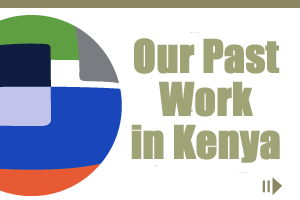By Ann Mikia
At the recent International AIDS Conference scientists for the first time used HIV and cure in the same sentence leading many journalists to ask: What remains to be told about a virus that has been around for 30 years?
This is the question Internews Country Director Ida Jooste posed to journalists at the three-day conference organized by Media for Environment, Science, Health and Agriculture (MESHA) in partnership with Internews.
She said that with AIDS still being the leading cause of death in the developing world many things are needed together to end it. This means the HIV narrative is not a simple story line. Jooste said that at the conference recently held in Washington D.C. it was apparent that different interventions were needed to address HIV including laboratory science such as “elite suppressors” and clinical science that address when to start patients on antiretroviral treatment. With more evidence emerging that tools for HIV prevention are becoming more effective attention must also be paid to the epidemiology track.
One study discussed at the MESHA conference was on treatment as prevention. The study entails enrolling HIV discordant couples on antiretroviral drugs. In the study, those infected with HIV are put on ARVs as soon as they test HIV positive. Currently in Kenya, people living with HIV only qualify to be enrolled on ARVs when their immunity goes down and their CD4 count drops to at least 350. The HIV negative spouse is also started on post exposure prophylaxis, a treatment given to people at risk of HIV infection such as rape victims and doctors who erroneously prick themselves with sharp objects while treating HIV infected patients. Health experts say people on antiretroviral treatment are less likely to pass the virus.
Ken Ondeng’e, a researcher from the Kenya Medical Research Institute (KEMRI)-CDC who presented the research on prevention as treatment at the MESHA conference said the anticipated challenges of this study were getting more Kenyans to go for HIV tests to enroll discordant couples in the treatment. According to the National Aids and STI Control Programme, only three out of five Kenyans know their HIV status. Another anticipated challenge is that of costs of putting so many HIV positive people on antiretroviral drugs. The highest percentage of ARV treatment is funded by the donors who have expressed interest to withdraw this funding and called on beneficiary countries to invent local ways of funding the program.




